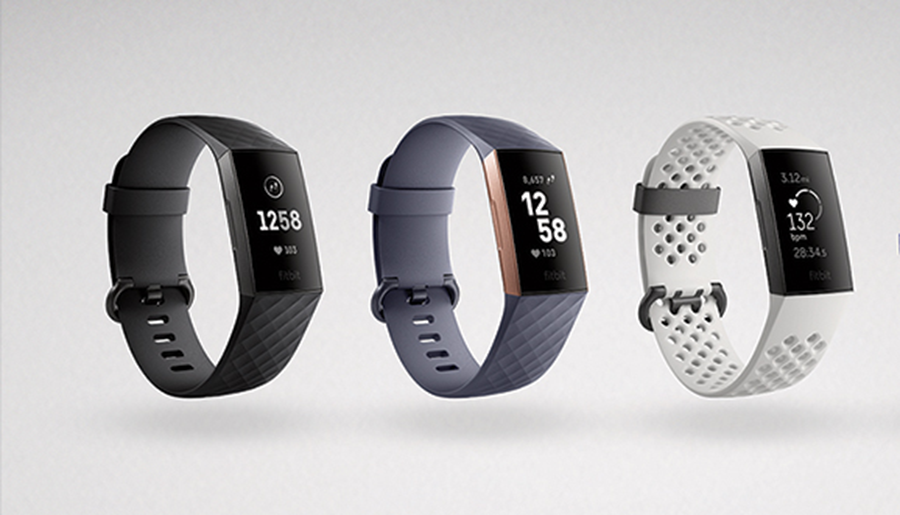Looks like Fitbit’s finally figured out how to make a smartwatch people really like. The declining sales of its lightweight activity trackers hasn’t stopped the company from producing new wristbands. It just announced its newest device: the Fitbit Charge 3.
Read more Fitbit Partners with CFDA to Launch New Fitbit Versa Collection with NY Fashion Label PH5
At first glance, the Charge 3 looks simply like its predecessor, the Charge 2: there’s a vertical black-and-white screen, and the overall shape and size are pretty much the same. But a closer look reveals that Fitbit has completely rebuilt the Charge 3 with a new aluminum body and Gorilla Glass 3 screen borrowed from its Versa line of smartwatches. The touchscreen display has support for grayscale colors (in addition to just plain black and white) along with 40% bigger display than the Charge 2.
Charge 3 is the first wearable in the Charge lineup to have a touchscreen. The module is now made of space-grade aluminum instead of stainless steel and plastic. On the side, there’s a nearly invisible, inductive button rather than a mechanical button. Once pressed with a finger, the Charge 3 gives haptic feedback. An updated heart-rate sensing module located underneath is the same one that’s in the Fitbit Versa, which includes an SpO2 sensor to measure oxygen saturation. Fitbit has grand plans with the SpO2 sensor for its future health tracking devices, reports Wired.
The base comes in black or rose gold, and for $30 you can choose a silicone band from a rainbow of colors. Pay a bit more and you get an upscale mesh or leather band. You can also get one that supports Fitbit Pay for $169.
The Charge 3 is water resistant (up to 50 meters) and now offers swim tracking in addition to the other forms of exercise that Fitbit has offered in the past.
It supports more push notifications, tracks laps in the pool, and lets you set fitness goals like burning 200 calories or shedding 10 pounds.
However, there’s no built-in wireless connectivity, so you’ll need to have your phone nearby to use features like GPS. That’s bad news for those who want to track running routes without carrying their smartphone. But Fitbit’s excuse is that adding GPS would have made the device clunkier and have a shorter battery life – two things users do not want. If you want to have an on-board GPS, buy the company’s Ionic for $249.
Read more How Fitbit is Trying to Transform Healthcare, While Transforming Itself
The Charge 3 comes in two models: a $149.95 Core version and a $169.95 Special Edition that features NFC and supports Fitbit Pay for payments. As for the color, for now, Fitbit is offering Charge 3 in 2 colors: graphite with a black band and a rose gold device with a lighter gray band. The special edition model gives you an additional band in the box.
Fitbit is offering preorders for the Charge 3 from its website, and it hits stores sometime in October.













